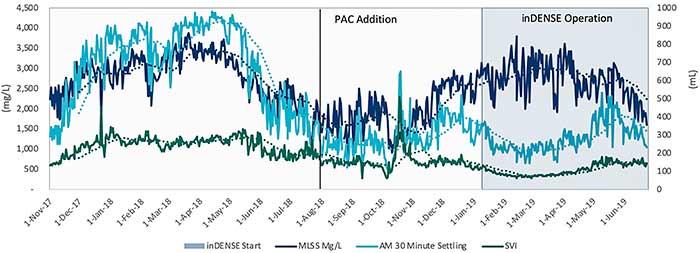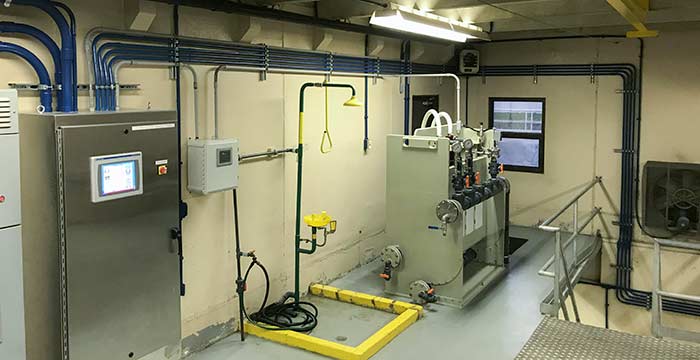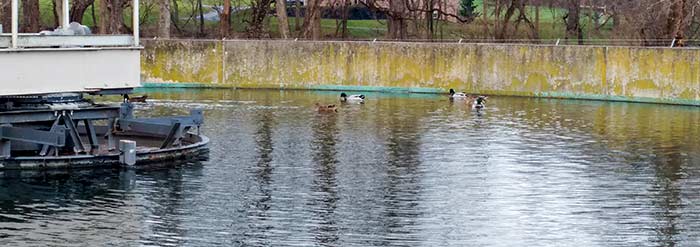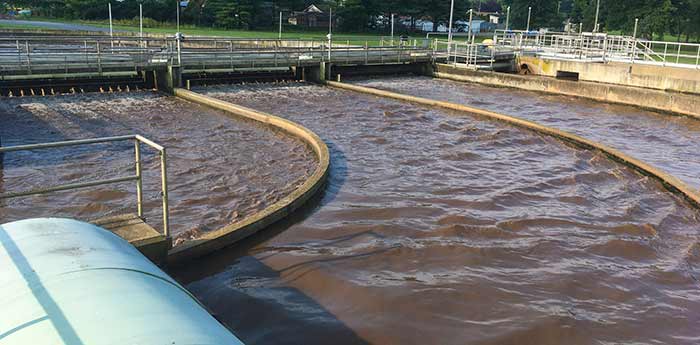The Ephrata Borough Authority water resource recovery facility in Pennsylvania has battled chronic sludge settling issues since undergoing a biological nutrient removal (BNR) upgrade in 2011 to meet new permit limits. During the winter months, sludge volume index (SVI) values have reached as high as 300 grams per milliliter (g/mL).
During the upgrade, the facility was converted from biochemical oxygen demand (BOD) and ammonia removal to total nitrogen (TN) and total phosphorus (TP) removal. An additional ring was added to the existing oxidation ditch increasing detention time to meet these new permit regulations. In spite of the upgrades, there was no appreciable improvement in settling. Numerous efforts were made in the last five years to improve settleability with minimal success.
 Image 1. Oxidation ditch operational data (Graph created by World Water Works using data from Euphrata Borough Authority)
Image 1. Oxidation ditch operational data (Graph created by World Water Works using data from Euphrata Borough Authority)In August 2018, the facility decided to invest in adding polyaluminum chloride (PAC) to the system. This chemical addition was moderately successful with SVI reductions of about 50 percent, with dosing up to 70 gallons per day (gpd).
Proposed Solution
Several operational modifications were recommended. Modifications made by the plant staff included removing aeration discs from the anerobic zone (fourth pass) and reducing the disc speeds in the anoxic zones. The sludge age was also increased from 13 to 16 days, which improved overall operation.
Sludge characteristics can be improved with holistic process optimization, which is important when evaluating the use of gravimetric selection technology—a method that retains denser biomass while wasting out the lighter fraction of mixed liquor suspended solids (MLSS) in the treatment system. The gravimetric selection technology system increases process throughput and performance through the selection of dense sludge aggregates with improved settling rates and the promotion of enhanced biological phosphorus removal (EBPR).
 Image 2. Installed skid (Image courtesy of World Water Works)
Image 2. Installed skid (Image courtesy of World Water Works)Conventional activated sludge (CAS) is the predominant global wastewater treatment technology. One key requirement of the CAS technology is the ability to effectively separate the liquid and solid fractions.
Unfavorable settleability can plague facilities seasonally or can be a chronic issue. Gravimetric selection technology helps alleviate this problem.
A gravimetric selection technology system was installed in late 2018 and became operational in January 2019. A progressive cavity pump was also supplied and installed by the facility to provide feed flow to the gravimetric selection technology system from the return activated sludge (RAS) tank.
 Image 3. Secondary clarifier (Image courtesy of World Water Works)
Image 3. Secondary clarifier (Image courtesy of World Water Works)The overflow (composed of the light fraction of MLSS) gravity feeds to an existing scum collection pit where the existing waste activated sludge (WAS) pumps transfer waste sludge to solids handling. The underflow (composed of the denser fraction of MLSS) gravity feeds back into the RAS tank where it comes together with existing RAS before being pumped back to the head of the oxidation ditch.
The facility has a permitted flow of 3.8 million gallons per day (mgd) with the following average effluent limit concentrations:
- total phosphorus: 2 mg/L (milligrams per liter)
- ammonia (Nov. 1-April 30): 6 mg/L
- ammonia (May 1-Oct. 31): 2 mg/L
Performance
The plant modifications and installation of the gravimetric selection technology process were successfully completed without treatment interruption. The facility’s staff provided all the necessary work in order to place the gravimetric selection technology system into service.
The system was operational approximately two weeks after installation began. Once in service, all waste sludge was processed through the gravimetric selection technology system. Within several weeks, the SVI was reduced from a December 2018 monthly average of 144 mL/g to a February monthly average of 71 mL/g. The settling velocity of the MLSS also improved with the clarifier sludge blanket levels.
 Image 4. Oxidation ditch (Image courtesy of Ephrata Borough Authority)
Image 4. Oxidation ditch (Image courtesy of Ephrata Borough Authority)As settling continued to improve over time, the plant was also able to reduce their PAC addition by about 70 percent. The system continues to show stable performance with the effluent ammonia values less than 1 mg/L on average. Additional work was conducted through this past summer to understand improvement to biological phosphorus.
Conclusion
Most wastewater treatment plants suffer from settleability issues periodically. Ephrata Borough Authority made multiple attempts to correct its issues, including process modifications and chemical addition.
With the addition of the gravimetric selection technology process, the Pennsylvania facility was able to correct this issue, allowing for improved settleability and BNR performance.


